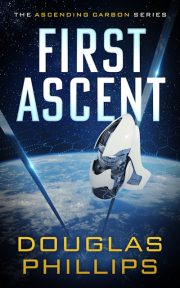Overview of Game Production and the Role of Writers
by Monica Valentinelli
 When you produce a game, you’re creating the interactive means for players to share a common experience that is often shaped by a story or narrative. The point, or goal, of that interaction will vary by the type of game. In games set in an expansive world like Star Wars, the Forgotten Realms, or Dragon Age, the goals will be present on a macro and micro level. Those goals drive the game design and shape how writers will intersect with the game’s text.
When you produce a game, you’re creating the interactive means for players to share a common experience that is often shaped by a story or narrative. The point, or goal, of that interaction will vary by the type of game. In games set in an expansive world like Star Wars, the Forgotten Realms, or Dragon Age, the goals will be present on a macro and micro level. Those goals drive the game design and shape how writers will intersect with the game’s text.
It’s easier to see what this means when considering video games, because the goals are baked into the way the player’s character interacts with the environment. For example, in Super Mario Brothers you play a character named Mario whose goal is to rescue Princess Toadstool. To do that, you need to move through the Mushroom Kingdom in order to face off against her captor, Bowser. In this game, there’s very little writing the player reads on screen.
In MMOs, RPGs, tabletop RPGs, and Interactive Fiction (IF) games, the player can see the writer’s hand in the game’s design through the descriptive text, dialogue, presentation of rules or choices, flavor text, etc. This aspect of the production can be done either in house (e.g. both permanent and Limited Term Employees) or through remote hires. Typically, however, before writers are hired the game’s production has already begun in some fashion to build a framework and identify design goals.
The Intersection of Writing and Production
One of the things I enjoy doing as a game developer is hiring new writers. In almost every case, writers are shocked to learn how many levers and pulleys there are in game production. This tends to hold true regardless of what kind of game a writer is contributing to; in part, this has to do with the process of transitioning from a consumer’s mindset (e.g. fan, critic, reviewer) to that of a creator’s. Sometimes, however, the process is confusing because there are aspects physical development that writers aren’t always involved with. A good example of this is that developers often regard word processing documents with an eye for production when they redline and provide comments. What’s laid out vertically on a page in text isn’t how it will be rendered in the final product, and that has a huge impact on what the writers are hired to write, edit, and make changes on. Sometimes, the number of words that fit on a page or a screen can also shape a writer’s assignment, too.
Other, lesser-known aspects of production might include:
- Canon or Setting Bible creation
- Systems/rules documentation
- Marketing copy and sell sheets
- Outlining and project management
- Mock-ups and proofs for manufacturing
- Playtest or beta editions
Production typically begins with concept and design—both of which involve a lot of brainstorming. For story-centric games, designers ask: What does a player-character (PC) do in their new game? And, alternatively, what do the PCs do as a group (2 or more players)? These answers are important to determining motivation which is either presented within the game’s context, or when the player decides what they want during gameplay. As I mentioned earlier, giving players the potential to act out their own desires within the framework of a story is shaped by what type of game is being designed. Why a player does what they do leads to many possibilities; it can lead to factions/guilds the PCs belong to, missions they pursue, etc. But, these motivations—e.g. the reason why a consumer is buying and playing the game—are crucial to figuring out not only what to write, but why writers contribute sections in the first place.
The intersection of writing and game design is extremely variable, and will depend upon which company a writer works for and what type of game they’re working on. The number of drafts will also depend upon the company, but for collaborative projects it can be as few as one draft and as many as twelve. The writer’s involvement will depend on whether or not they own the material. If they do not own it, they are often removed after the third draft, and their role in production is then over. The developer then takes over to shape the text further, and is the point-of-contact for editing, proofreading, indexing (when required), and proofing.
The role of a writer in a production cycle is a different with respect to card and board games. Often, the writer works in house to produce text for these games. Their work is integrated into the production process, which means they often don’t “just” write for games. Card and board game designers who sell their game to a company often do so up front; meaning, they deliver their game’s prototype and text to a company who will then work with them to produce the game per the terms of their agreement.
What Developers Look For When Hiring Writers
Ideally, a game writer is hired because they some understanding of the rules, familiarity with the setting, or have worked on games before. They do not necessarily need to have knowledge of the production cycle, but they do need a willingness to learn. Outside of that, developers also look at whether or not a writer can meet deadlines, write to spec, and know how many words they can safely write in a month.
Hiring untested or new writers/artists/designers/editors/indexers can affect the production or release of a game, because it takes time to train new professionals and there’s a possibility they won’t be able to complete their assignment. Add that to the 1,000 other things that can go wrong during production, and it’s easy to see why developers tend to hire experienced writers as opposed to bringing on a team of all new writers. I cannot stress enough how invaluable it is to have fresh perspectives, however, especially for legacy games (e.g. games that have been in production for a long time). One of the hardest aspects of tabletop game design (card, board, RPGs, etc.) is for experienced designers to clearly express the rules for new players; there is no better way to facilitate that information than to hire new people.
Regardless of which type of game writers are working on, their piece is a small part of a much bigger process. Most of the time, game writers are not in a position to affect the design of a game or add art notes unless they’re given that freedom to do so. For this reason, I strongly recommend that game writers form a good relationship with their point-of-contact working on the project. The better that relationship, the more freedom a writer will have to influence decisions. Though that may not always be the case, especially with respect to licensing or larger projects, it is absolutely true for smaller companies.
Let me know if you have any questions about game production and how writers intersect with this important aspect of game design. Happy to answer them!
•••
Monica Valentinelli writes stories, games, essays, and comics for media/tie-in properties and her original works from her studio in the Midwest. She’s a former musician of 20+ years and a graduate of the University of Wisconsin-Madison’s Creative Writing program who now writes full-time. Best known for her work in games, Monica is currently the developer for Hunter: the Vigil Second Edition, and was the lead developer/writer for the Firefly RPG line based on the Firefly TV show by Joss Whedon. Her new book The Gorramn Shiniest Dictionary and Language Guide in the ’Verse recently debuted from Titan Books. Her co-edited anthology Upside Down: Inverted Tropes in Storytelling debuted from Apex Book Company in December 2016.


